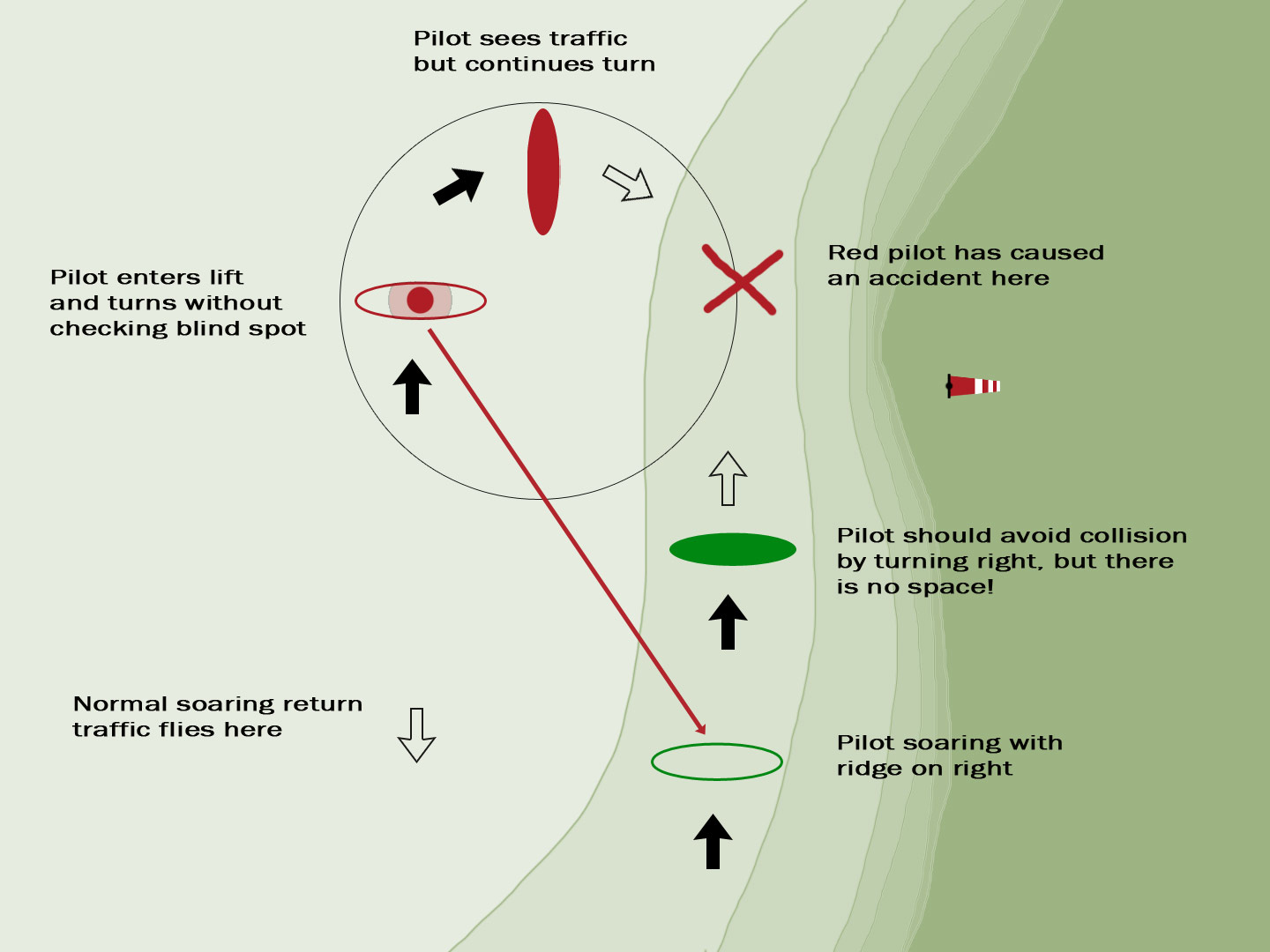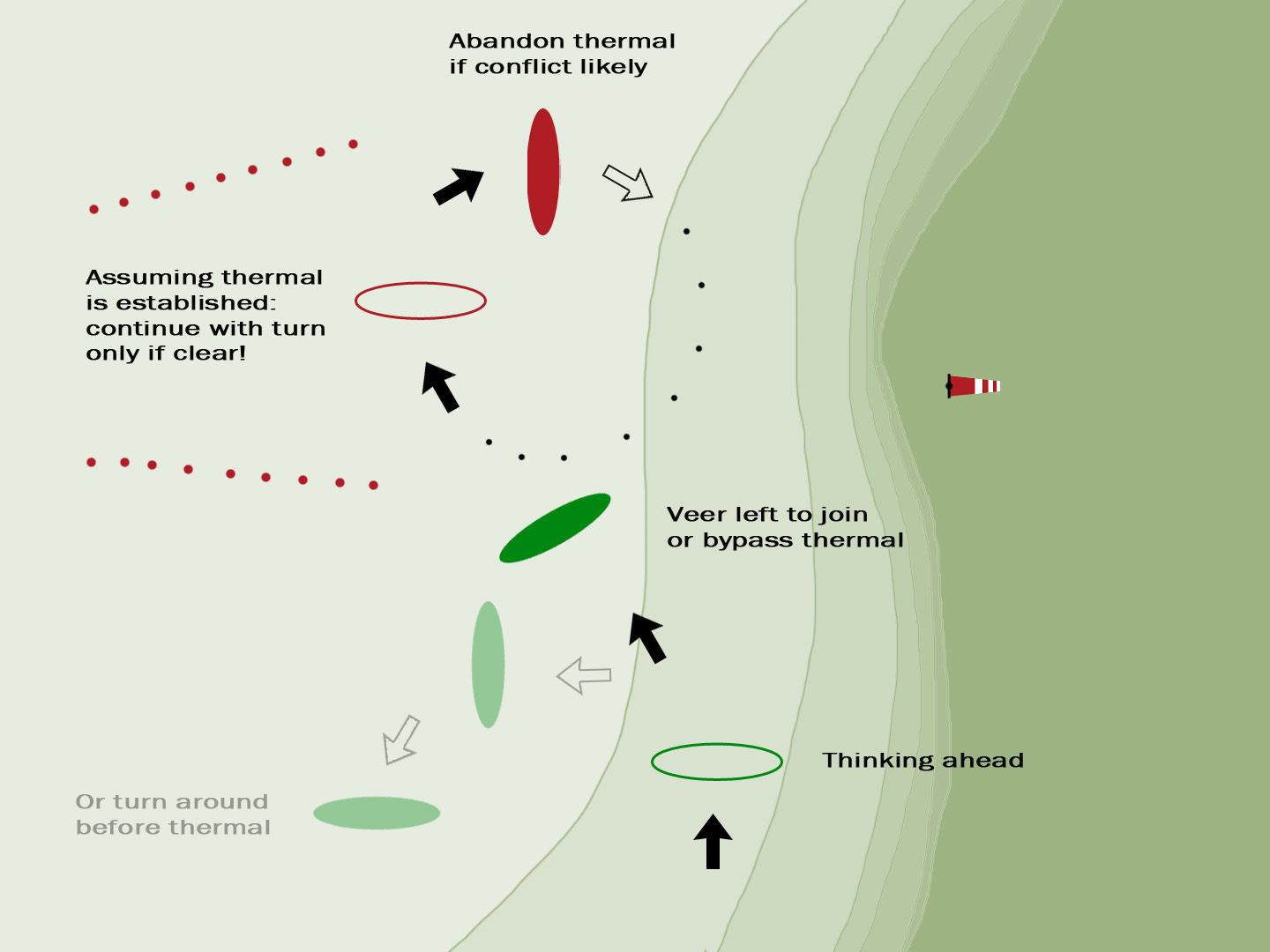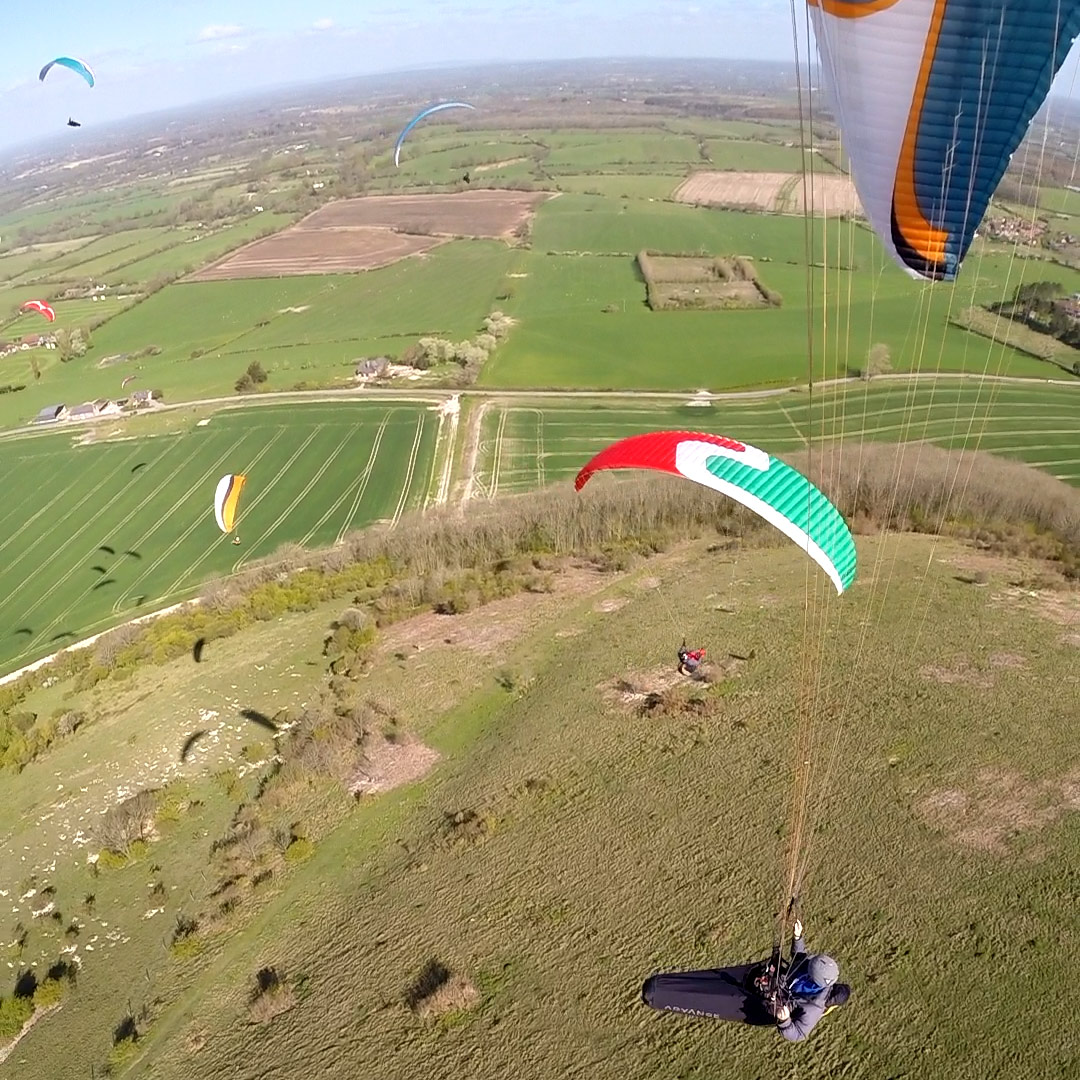Who Has Right Of Way?
When soaring a hang-glider or paraglider, there is a simple rule that dictates the traffic flow – follow the ridge with the slope close on your right, return with the slope farther away to your left. This adheres to the international standard: when approaching an aircraft, avoid a collision by turning to pass on the right.

Diagram 1: Normal soaring pattern
When someone begins thermaling right, close to the ridge, there are two rules that point against them: the pilot to the right has right of way, and the one with the ridge to his right has right of way.

Diagram 2: Sudden thermal turn causes chaos
Swinging onto the ridge and scattering the flock (as the red pilot does) is very dangerous. Yet it happens because some pilots believe they have a right to thermal.
Where does this belief come from?
It comes from a conflicting rule: pilots joining a thermal must do so in the same direction as the established thermaling traffic. So a thermaling pilot does not expect anyone to fly into the space downwind of him.
A conflict in the rules is a precursor to an accident, so take note: this is a potentially dangerous situation! Let’s think this through.
What is an established thermal? I’d suggest it requires more than one full 360 degree turn. This gives other pilots enough time to perceive the pattern. If you cannot complete a full 360 degree turn in clear air, then do not begin to thermal. If you are at the same height as the ridge soaring traffic, you’ll do just as well in a steady soaring beat.
The last thing an inexperienced soaring pilot needs is a pilot swinging in at high speed from the side (surprise!) forcing an awful choice of banking right and spanking into the ridge or flying left into the middle of turning traffic. In crowded marginal conditions, it's best to avoid thermaling near the ridge and let the simpler pattern of ridge soaring traffic establish itself.
But let's assume the situation is happening already. What should you do? Adopt a defensive flying strategy:

Diagram 3: Thermaling pilots drift onto ridge
Soaring Pilot
If you’re approaching circling pilots, you should alter your soaring path to feed into the direction of flow, which might mean veering off the ridge (left in Diagram 3). This assumes an established thermal that has drifted onto the ridge, so you’ve had some time to notice the circling pilots. The established pattern means it’s unlikely there is any return traffic blocking this move out. If you choose to bypass this thermal, the left side is the best side to bypass it on. By looking ahead, you have put yourself in the best position, where you have the most options. Don’t fly straight along the ridge, downwind of the circling gliders, in the narrowing gap between ridge and thermal.
In Diagram 2 (solid green), a hard 90 degree left turn will still get you out of trouble, so it’s a skill you should practice, but you shouldn’t be forced to do this. That’s reactive flying, and isn’t nearly as smart.
If you’re thinking far ahead and can identify the thermalers early enough, you can turn around to avoid it altogether – simple!
Thermaling Pilot
It takes time and experience to be able to thermal, particularly close to the ridge, so you’re more likely to be the senior pilot, and should fly in a way that harmonises with the juniors nearby. At the outlined red position in Diagram 2, check your blind spot for traffic that would be compromised by your turn. At the solid red position, abandon your dangerous right turn, and instead veer left and slot into a ridge soaring lane.
In the established thermal of Diagram 3, as the thermaling pilot you must be very cautious as the thermal drifts into the soaring lanes. Remember, there is no clear right of way, there is a conflict of rules and you’re drifting into it.
If in doubt, return to the thermal at a better moment, search further along the ridge or push further upwind before attempting to thermal. Regardless of how you interpret the rules, it’s the duty of every pilot to fly in a manner that avoids a collision.
Related article: XC Secrets: How to thermal with pilots

